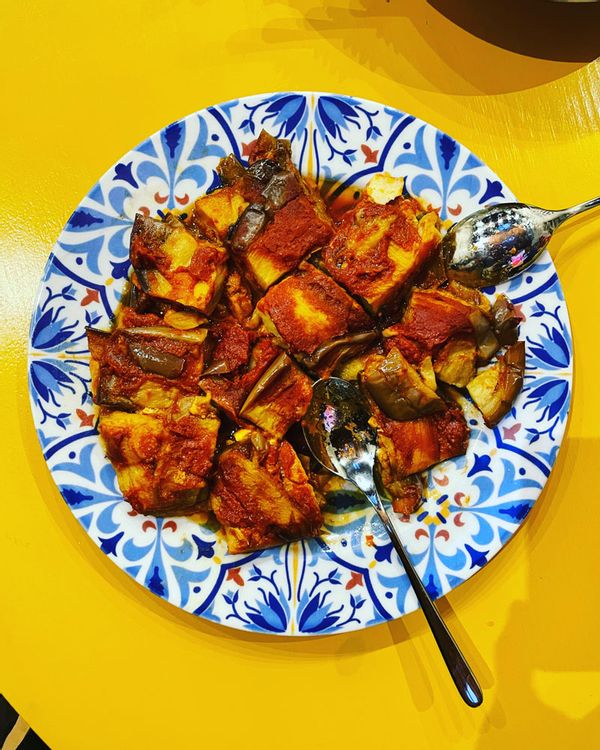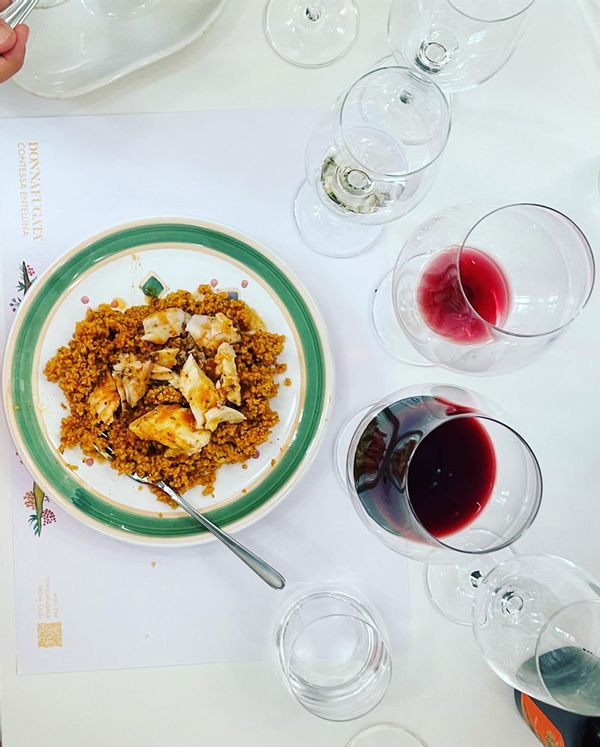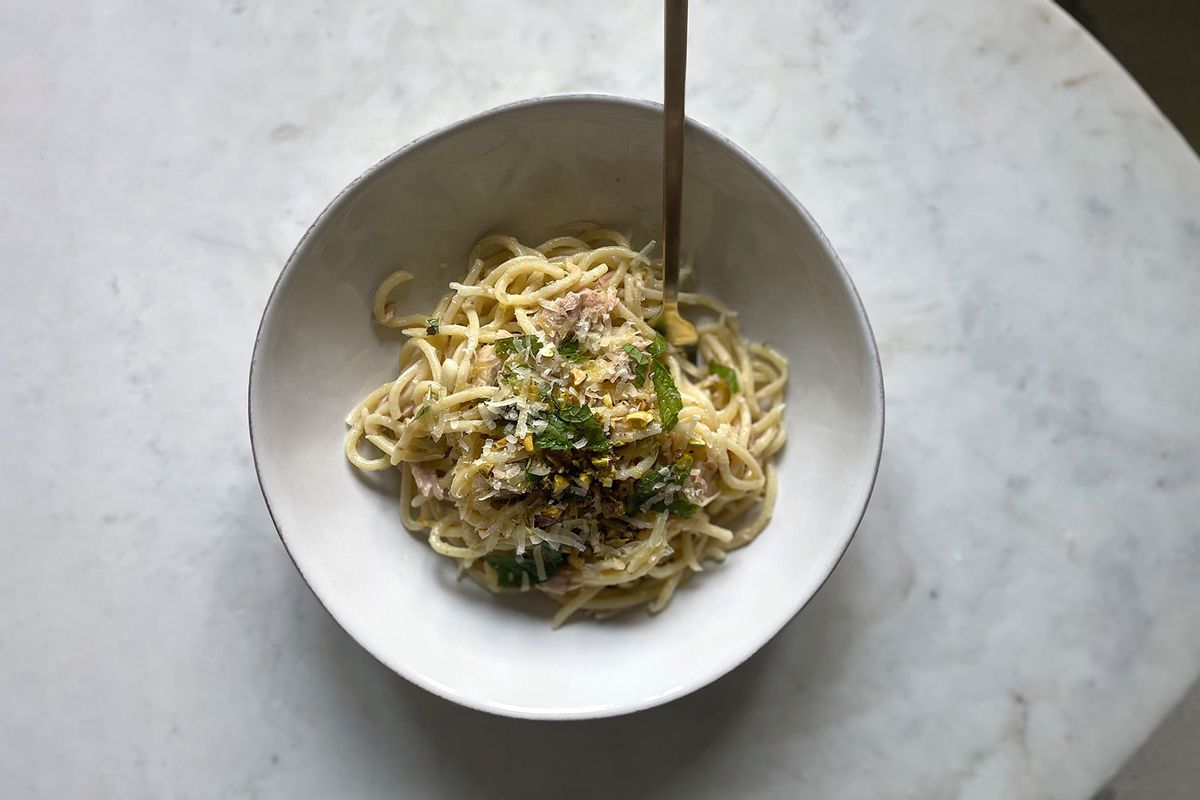I'm not quite sure why I cook like a Sicilian; I'm not one ounce Sicilian, for one thing. My family tree is half Irish, the rest German and Croatian. Nor had I ever visited Sicily, the volcanic island jewel just off Italy's southern coast, until this summer. But somehow I've cobbled together a home-cooked diet over 39 years that mirrors that of many Sicilians: lots of tuna and oily fishes in starring and supporting roles, a love of minimalist pasta- and grain-based dishes, nutty pestos, capers, and savory uses of dried fruit, of slow-cooked squashes, tomatoes and eggplant.
A few of these tendencies I can explain. I cook eggplant parm sort of like a Sicilian because my German immigrant grandmother had an immigrant neighbor from southern Italy with whom she swapped recipes. My grandmother also cultivated a massive garden that forever imprinted a love — ahem, compulsion? — to incorporate seasonal produce into every meal, which she passed to my mom. I started tossing tinned sardines with pasta and oil-fried breadcrumbs around 2010 because Mark Bittman did, for "The New York Times" dining section. Soon enough, this led to topping things like braised veggies and pan-fried oily fish with breadcrumbs too.
Yet for the most part, every time I opened a restaurant menu throughout Sicily and Pantelleria, the tiny island almost halfway to Tunisia, I felt like I was bumping into a dear friend in an unexpected place.
Sicilian cuisine, like its history, is characterized by long centuries of foreign dominations, starting with Corinthian colonists who arrived from Greece in 734 B.C. and planted hazelnuts, vineyards and olive trees. Then came the Romans who brought hard durum wheat, and the Arabs who introduced sherbet, couscous and eggplant, not to mention a penchant for stuffed foods, pistachios and spices like saffron and cinnamon. Spanish rule brought tomatoes and chocolate to Sicilian pantries, while shipments of prickly pear cactus from the New World began a tradition of eating the fruit raw after meals that continues in Sicily today.
It's a remarkably rich larder, whose origin story made me reflect on the development of my own cooking style. Why do certain ingredients and cooking methods imprint on us more than others?
Of course, Americans as a whole can't seem to get enough of Italian food, wine and culture. Some of this can be explained by the fact that approximately 17 million people of Italian ancestry live in the U.S., and about one-eighth of U.S. restaurants serve Italian food. Italy likewise remains a beacon of aspirational travel for Americans. According to a 2019 survey by vacation home rental company Vrbo, Italy was the top dream destination among millennial travelers ages 18 to 34 by more than 9 percent (travelers 35 and over chose Australia). Food and travel networks have continued to bank on our fascination with Italy by feeding us a steady diet of stars from Giada de Laurentiis (Food Network's "Giada in Italy") and Stanley Tucci (CNN's "Searching for Italy") to Phil Rosenthal ("Somebody Feed Phil") romping around the boot in a FOMO-inducing feedback loop.
It's a disservice in many ways to repeatedly uplift places that are already so familiar, capitalizing on our inherent risk aversion. There are plenty of other places that merit our attention and hardwon disposable income. Yet travel is intimidating to many. Why not edge out into the world on a comforting foundation of pasta and pizza?
It's also beautiful, irresistible even, to visit a place far from home and feel so connected to it. I'll never forget my first tastes of squid tartare and caponata packed with eggplant, tomatoes and capers in vinegary, sweet sauce — when I realized I'd found my kindred cooking spirit. From there, every bite was a tiny, jubilant revelation.
We need your help to stay independent
In Marsala, I went back for seconds then thirds of Ristorante I Bucanieri's eggplant parm, trying to unriddle its confoundingly luxe texture. I later learned from chef Nino Chirco that the vegetable is painstakingly coaxed from raw to silkily tender over three and a half hours in a low oven between layers of sweet tomato sauce, basil, hard-cooked eggs and parmesan.
 Eggplant parm from Ristorante I Bucanieri's (Photo courtesy of Maggie Hennessy)At the no-frills Trattoria da Antonio in Catania, an appetizer of baked sardines stuffed with breadcrumbs and currants tasted like weeknight pasta I'd made only days before. The rich, satisfying pasta that followed, curled-edged casarecce with pistachio pesto and bacon, tasted like one that would join my repertoire as soon as I got home.
Eggplant parm from Ristorante I Bucanieri's (Photo courtesy of Maggie Hennessy)At the no-frills Trattoria da Antonio in Catania, an appetizer of baked sardines stuffed with breadcrumbs and currants tasted like weeknight pasta I'd made only days before. The rich, satisfying pasta that followed, curled-edged casarecce with pistachio pesto and bacon, tasted like one that would join my repertoire as soon as I got home.
I dragged fried anchovies through caper mayonnaise at the seaside osteria El Principe e il pirata in Pantelleria, reveling in the rare chance to eat them in a form other than packed in oil or salt, which is how I most often use them.
 Couscous with rockfish at Donnafugata's Contessa Entellina (Photo courtesy of Maggie Hennessy)When I audibly marveled over the al dente texture and nuttiness of impeccable couscous served at a pairing lunch at Donnafugata's Contessa Entellina estate in Palermo, an employee showed me a video on his phone of him learning to make the tiny semolina pasta by hand from the Rallo family's longtime chef Signora Michela Novara through a patient series of finger rakes and palm rolls. The housemade couscous was topped with sweet, delicate rockfish cooked in tomato broth for a soothing lunch we'd see variations of across the island over the ensuing days.
Couscous with rockfish at Donnafugata's Contessa Entellina (Photo courtesy of Maggie Hennessy)When I audibly marveled over the al dente texture and nuttiness of impeccable couscous served at a pairing lunch at Donnafugata's Contessa Entellina estate in Palermo, an employee showed me a video on his phone of him learning to make the tiny semolina pasta by hand from the Rallo family's longtime chef Signora Michela Novara through a patient series of finger rakes and palm rolls. The housemade couscous was topped with sweet, delicate rockfish cooked in tomato broth for a soothing lunch we'd see variations of across the island over the ensuing days.
One pasta dish in particular, at Ristorante Le Lumie in Marsala, captivated me such that I rudely opened the notes app in my phone, mid-bite, to get it down: "6/7/23: pistachio, tuna, mint, pasta."
It was savory yet delicate; bright, rich and textural; new yet so familiar, like unlocking a memory that had been just out of reach my whole life. I couldn't wait to recreate it in my own kitchen, to pocket another edible treasure from this place whose food feels like coming home 5,000-odd miles away.
Cook's Notes
I generally reject ingredient snobbery, but you'll benefit from spending a little extra on really good-quality, bronze-extruded pasta, finishing olive oil, sustainably caught tuna and preserved anchovies. When the component parts are great, this simple assemblage yields beautiful harmony.
Ingredients
Salt, as needed
Everyday extra virgin olive oil (I like California Olive Ranch)
3 cloves garlic, bashed
Zest of ½ lemon
1 oil- or salt-cured anchovy or ¼ tsp Colatura di Alici
⅓ cup fresh mint leaves, julienned and divided
6 ounces oil-packed, sustainably caught tuna, chopped (or minced if you want more of a bolognese consistency to the sauce)
Lemon juice, as needed
¾ lb. spaghetti (I like Martelli and Faella)
⅓ cup roasted, unsalted pistachio meats, chopped, plus a small handful more for garnish
⅓ cup grated fresh Parmigiano-Reggiano
Your best extra virgin olive oil, for finishing
Directions
- While you bring a large, generously salted pot of water to a boil, heat a wide skillet or Dutch oven over medium heat. Add a few glugs (2 or 3 Tbsp) of olive oil. When the oil slides easily around the pan, add the bashed garlic, lemon zest, anchovy or Colatura and about half the mint leaves. Sauté for 2-3 minutes, until the mint has softened and you can smell the garlic.
- Drain about half the oil from the tuna can; add the tuna and remaining oil to the skillet, along with the juice of half the lemon. Cook for 5-7 minutes, breaking up the fish with a wooden spoon or spatula. Taste, and adjust with salt and lemon juice if needed.
- Meanwhile, cook the pasta according to the box directions. When the noodles are al dente, add them to the skillet along with pistachios and a splash of starchy pasta water, tossing to combine. Kill the heat, add about half the Parmesan, a bit more mint, a squeeze of lemon and a drizzle of olive oil. Taste and adjust the seasoning if needed.
- Plate the pasta in wide, shallow bowls, and top with the remaining chopped pistachios, mint, and parm, plus a finishing drizzle of your finest olive oil. Serve and savor.
Read more
from this writer
Salon Food writes about stuff we think you'll like. While our editorial team independently selected these products, Salon has affiliate partnerships, so making a purchase through our links may earn us a commission.



Shares